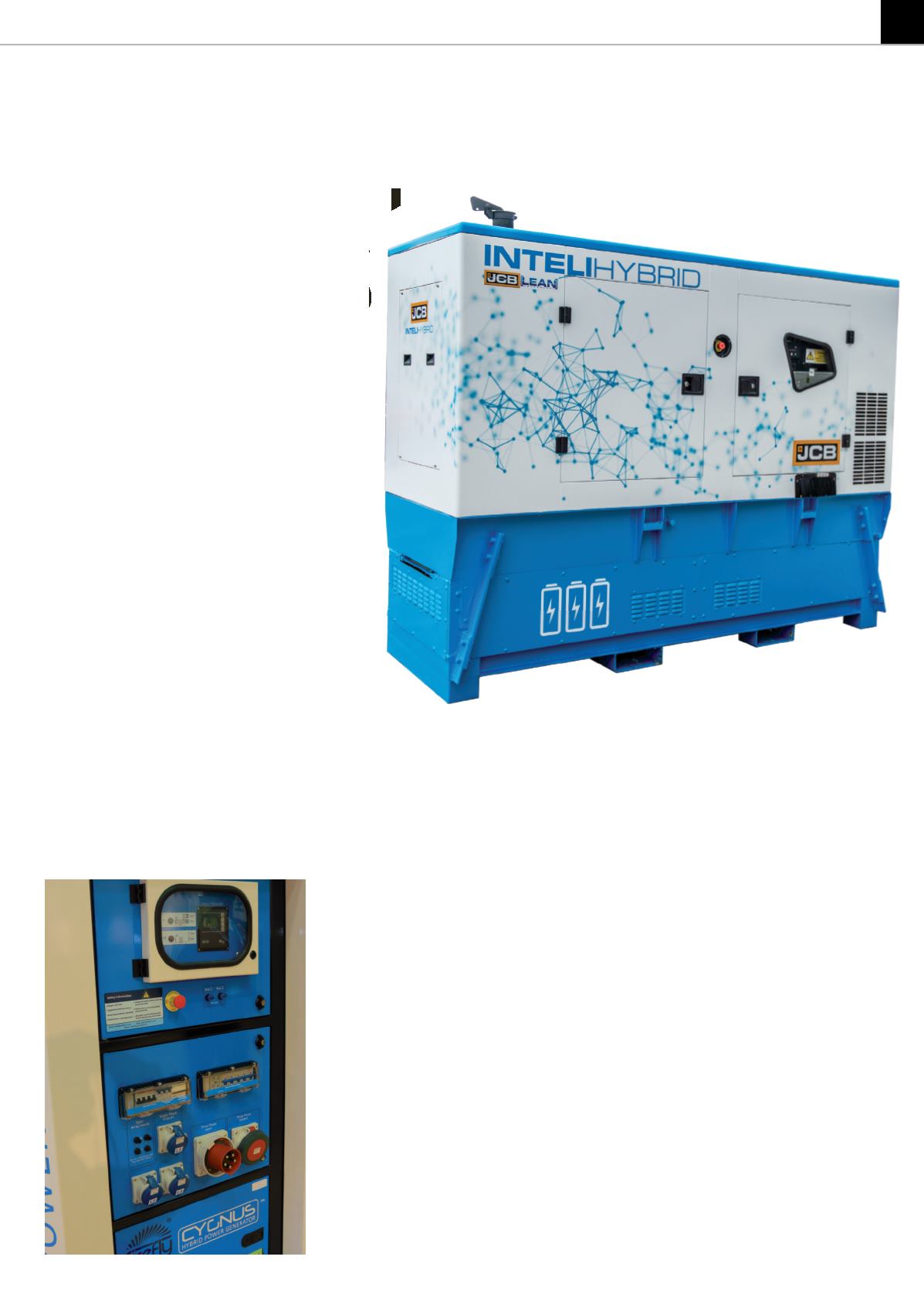
41
GENERATORS
IRNAPRIL-MAY 2015
Highhopes for
hybrids
As users come to termswith
a changing industry, new
technology is driving the
mobile generator forward
products manager of Doosan Portable Power. “It’s
the biggest attribute rental companies are looking
for,” saidMrHowe.
“So for them to achieve a good return, we offer
products that have high utilisation. Our mobile
generators feature quiet operation, the capability to
operate at a range of voltages and large capacity
tanks tomaximiseoperationbefore refuelling.
“It’s absolutely critical to capture customer
feedback to ensure product designs will meet
customer needs. As our product is predominantly
used in rental applications, we need to meet the
expectations of the fleet buyer as well as the end-
user. It’s currently a challenging market, with
companies coming to grips with the cost of Tier 4
Final technology.”
Recent launches byDoosanPortable Power include
the G40-IIIA (40 kVA prime power) and G60-IIIA (60
kVA prime power) generators. They share a similar
design and characteristics to the G150-G200-IIIA and
G80-G100-IIIAproductplatforms launched in2012and
2013 respectively and offer a choice of features to
meet temporarypower applications.
Suited to areas as diverse as construction sites,
concert stages and disaster relief efforts, and of
particular interest for the rental market, the G40-
IIIA and G60-IIIA generators are available with
two different frame-fuel tank configurations. The
standard configuration ensures autonomy of at
least 10 hours at 75% of the load, but there is also
a 24 hour fuel tank configuration. Three natural gas-
fuelled generators, the NG160, NG225 and NG295,
havebeendesigned for theoilfield servicesmarket.
Intermediary
It’s a view that Spanish genset manufacturer
Himoinsa, recently acquired by Yanmar, agrees with.
Thecompany said: “Profitability iswhat counts in the
rental sector, along with quality, durable equipment.
In thisregard, rentalgeneratorsetsdemandexcellent
performance and reliability. However, the rental
company is not the user of the equipment; rather it
acts as an intermediary between the manufacturer
and the end user. This process makes the design
phase more complicated for the generator set
manufacturer, because it involves one extra aspect
comparedwith other sectors. Here, the needs of the
rental companyand thoseof theenduser need tobe
taken intoaccount together.”
Himoinsa itselfmanufactures rental generator sets
with stage IIIA engines, with power ranging from 30
to 665 kVA. The company also designs generators
with higher power and special configurations and
connections in parallel that can increase and/or
reduce thepower byadapting it tomeet theneedsof
the client at anygiven time.
Rental customers of Himoinsa include Loxam,
Ramirent andAtut Rental.
Atlas Copco’s Ben van Hove believes that the
company’s roots are important in helping it to
understand customers.
“We are a generator company because of the
A
sk a group of people to sum up temporary
power generation in one word and the
chances are theywill choose “hybrid”.
Putsimply, it’sawayofcombiningpowergeneration
and energy storage in the same unit. Now, with
emissions legislation having an increasingly forceful
impact onproduct development, it is starting to look
like thehybridgenerator’s timehas come.
And if independent verification is the benchmark,
look no further than Firefly, MHM Plant and JCB.
The first two go to next month’s European Rental
Awards with hybrid generators on the shortlist for
Sustainable Product of the Year; the latter already
has already won an Innovation Award from the
organisers of the UK’s Plantworx exhibition for its
Inteli-Hybridproduct.
Return
But whatever the form of generator a customer
chooses, the overriding factor in their choice is
gettinga returnon their investment.
That is the view of Todd Howe, global generator
JCB has already been recognised for the innovation behind its
Inteli-Hybrid product
The control panel on a Firefly Cygnus Four


